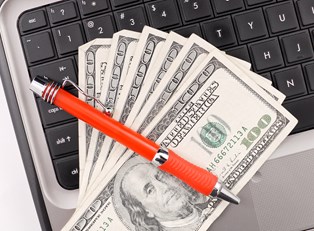When paying a third party, you can pay by a personal check or a money order. A check is drawn from a checking account you set up at a financial institution. A money order is like a check, but is offered by a vendor and paid for with cash. Looking at the basics of each one, you will see they both offer their own unique advantages and disadvantages.
The Basics of Checks
Personal checks cost around $20 a box of 150, or about .13 cents a check, making them an easy and cheap form of payment. Checks offer a proof of payment once cleared through your financial institution and are listed on your monthly bank statement. You can cancel a check in case of loss or you decide you don’t trust the payee. Since your checks are drawn on an account, your financial institution usually offers overdraft protection, just in case your account is too low or out of funds. Some disadvantages include fees, which are assessed for returned checks or having too low of an account balance. If a check is stolen, a thief has access to your banking and personal information because your name and account number are printed on the checks.
The Basics of Money Orders
Money orders are paid for in cash, made out to the payee, and guaranteed by the issuer. Money orders are available at post offices, banks, grocery stores and business that deal in money transfers. Some payees will only take money orders, to avoid a bounced check. Money order fees can run from .50 cents to $10, depending on the vendor and issuing amount. Money orders come in duplicate to support record keeping. You can only cancel a money order before it is cashed. The greatest benefit of a money order is security, since your personal information and banking information are not printed on it. Some disadvantages include high fees and hours or location of vendors who sell them.
The Choice Is Yours
There are several advantages to both checks and money orders. They both offer proof of payment. Checks are less expensive, while a money order can cost up to $10, depending on the vendor. You can cancel both of them before they are cashed. Checking accounts often offer overdraft protection in case the money isn’t available. Money orders are paid with cash and guaranteed by the issuer. Sometimes a seller will not take a check and requires a money order as payment. For the easiest and cheapest way to make a payment, a check is the clear winner. For more security and a guaranteed form of payment, a money order is the way to go.



